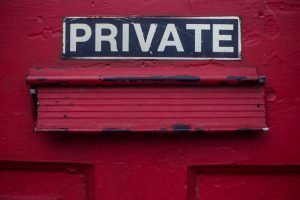Landlord and tenant laws in Arlington County can be fairly complex; the laws depend on the number of rental properties you own, and get more complex the more you own.
If you have three or more homes that you rent out to tenants, you’re required to follow the Virginia Residential Landlord and Tenant Act.
If you are renting out only one or two homes, you simply need to comply with the terms of your lease.
At Nomadic Real Estate, we help all of our owners comply with the landlord and tenant laws, regardless of how many rental properties you own. A few of those laws need a little more attention and knowledge to make sure you’re truly in compliance.
Security Deposits and Rent
There isn’t any rent control in Virginia or in Arlington County. Landlords are permitted to charge whatever they want and whatever the market will bear.
Rental increases can be in any amount, but may not be made during the course of the lease; you have to wait until the lease renewal.

However, security deposits have legal limits. In Arlington County, you can’t charge more than the equivalent of two months’ rent. Most landlords charge an amount that equals one month.
Two months can be prohibitive for many good tenants, and you don’t want to give them a reason not to choose your property when they’re looking for a rental home.
You’ll need to return the security deposit within 45 days of the tenants moving out. To avoid disputes, make sure you document the condition of the home before the tenant moves in, and then use the same checklist and take the same photos after a tenant has moved out.
This will help you document any damage that has been done and may justify the use of all or part of your tenant’s security deposit.
Providing a Habitable Home
As a landlord, you’re legally required to provide a home that’s safe and habitable for tenants. If your tenant complains about a lack of heat in the winter or loses water, you need to respond and fix the issue right away.

If you don’t, you’re violating the Virginia Uniform Statewide Building Code. The tenants are not legally permitted to withhold rent, but they can report you to the Code Enforcement Office.
Once that happens, your property will undergo an inspection and potentially a fine if you are found to be in violation of the code.
Respecting Privacy and Quiet Enjoyment
Arlington County landlords are required to provide 24 hours of notice before entering a property. Think about it – how would you like it if the repairman just showed up and expected you to let them in? Your tenants don’t like it any more than you would!

If you want to make repairs or conduct an inspection, you need to schedule these things at least a full day ahead of time.
Fair Housing Laws and Requirements
Arlington County fair housing laws start with the federal Fair Housing Act. You can’t discriminate during the advertising, screening, or leasing process based on:
- Race
- Color
- Religion
- National Origin
- Familial Status
- Disability
- Sex
Keep in mind that some of these issues may not seem like discrimination, but can be. For example, emotional support animals, or ESA’s, are protected under the Fair Housing Act. If a tenant has an ESA and can provide documentation, they must be allowed to stay in the building regardless of pet policies.
In Arlington County, there’s an additional protected class based on Virginia’s fair Housing laws: the elderly. You can’t discriminate against a person who is 55 years or older.
It’s easy to make a mistake if you don’t know the legal landscape in Arlington County or statewide. If you’d like some help or have any questions, please contact us at Nomadic Real Estate.



































